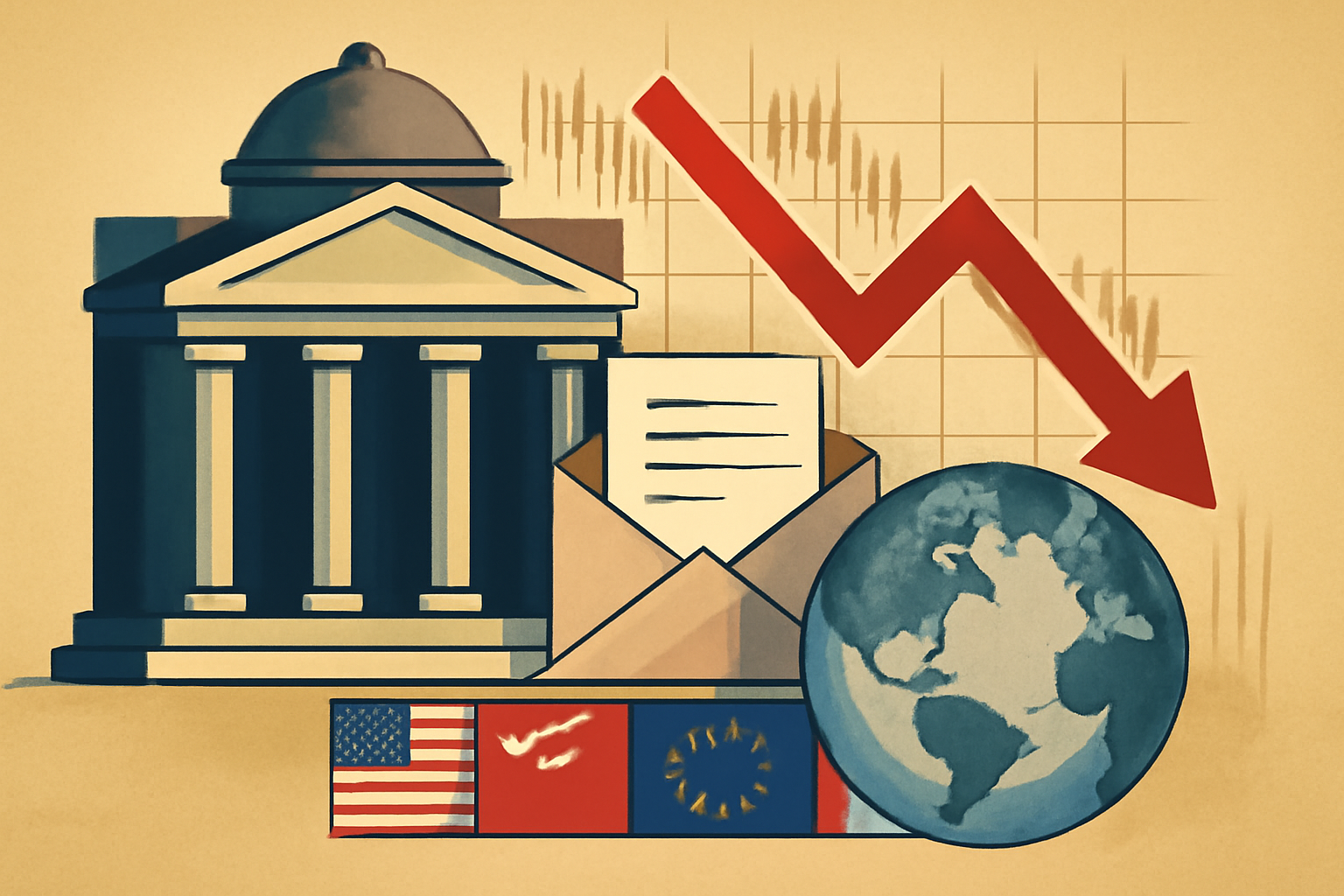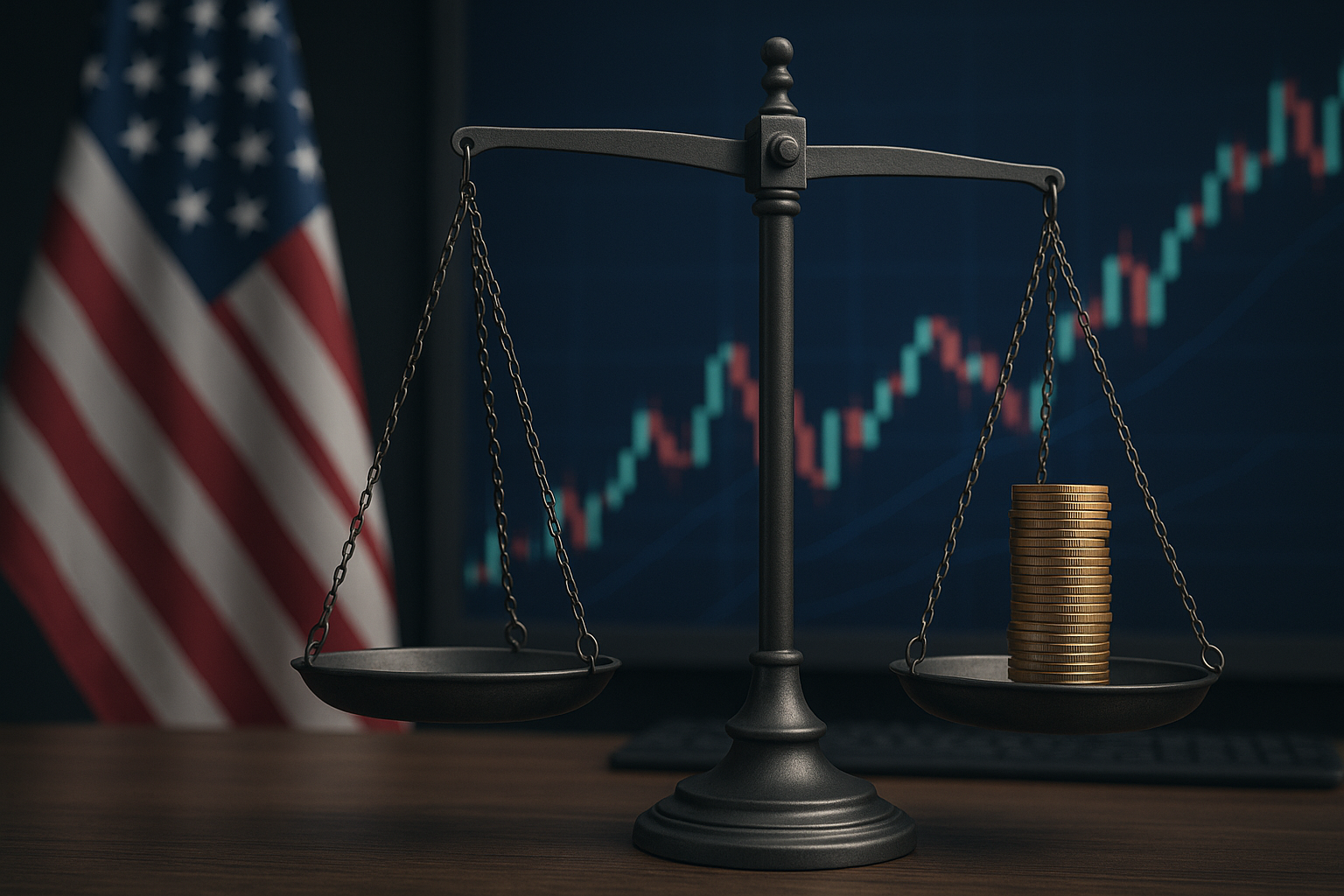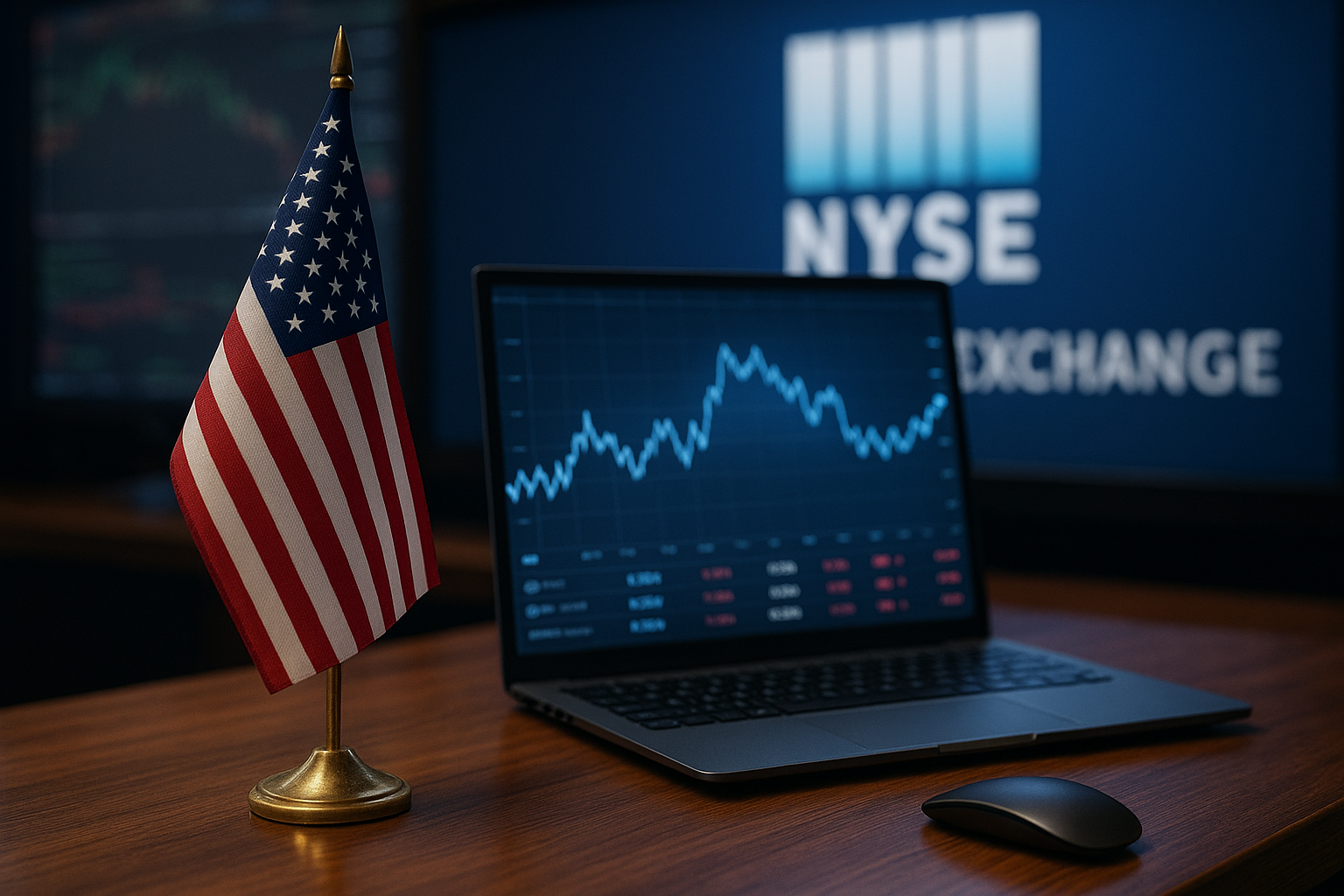Wall Street may have closed July 3 with record highs, but the calm could be fleeting. Investors are now bracing for what may be one of the most consequential trade policy shake-ups since 2018. Former President Donald Trump, widely viewed as the frontrunner in the 2025 race, has announced plans to issue “unilateral tariff letters” to major trading partners starting July 5. The letters, according to early leaks from the Trump campaign and reports from Reuters and Bloomberg, will give countries until July 9 to strike new trade agreements—or face sweeping tariffs ranging from 10% to 70%.
Global markets have taken notice. Futures wobbled following the announcement, and foreign exchange markets saw a rise in defensive posturing, with safe-haven currencies like the yen and Swiss franc gaining ground. The S&P 500 and Nasdaq may be riding AI-fueled highs, but the specter of a tariff war looms large—and investors are reassessing their risk exposure fast.
Why This Move Matters Now
The proposed tariff letters represent a return to the high-stakes brinkmanship that characterized Trump’s first term trade strategy—one that rattled global supply chains and reshaped manufacturing decisions across multiple sectors. Unlike the gradual escalation seen during the U.S.–China trade war in 2018–2019, the current strategy is designed to frontload pressure, with a tight July 9 deadline that gives trading partners minimal time to respond.
According to sources close to the Trump campaign cited by The Wall Street Journal, the tariffs would apply to both allies and rivals, including the European Union, Canada, Mexico, and China, in an attempt to quickly “rebalance unfair trade advantages.” Products under review include automobiles, semiconductors, pharmaceuticals, and critical minerals—industries that are heavily integrated into global supply chains and carry major investment weight.
A July 4 report from Politico highlighted that top multinational CEOs have already begun lobbying Washington in anticipation of “abrupt market distortions.” Investors in globally exposed sectors like technology, industrials, and consumer goods should be paying close attention.
Economic & Market Reactions So Far
While U.S. equities remain near all-time highs, volatility indexes have started to edge higher, and gold prices briefly spiked above $2,370/oz, reflecting a classic flight-to-safety pattern. Treasury yields dipped slightly, suggesting bond traders are beginning to price in the potential for trade-driven economic slowdowns.
Currency strategists at JPMorgan warned that “if the July 9 deadline results in unilateral tariff enactments, expect sharp downward revisions to GDP forecasts in key export economies.” Meanwhile, Goldman Sachs issued a note saying the policy shift could “drag S&P 500 forward earnings by 3–5% if met with symmetrical retaliation from trade partners.”
Risks and Opportunities: What Investors Should Watch
1. Defensive Positioning is Back:
Utilities, consumer staples, and healthcare are expected to outperform in a risk-off environment. ETFs like XLU, XLP, and VHT may benefit from renewed defensive rotations.
2. Domestic Manufacturing Plays:
Companies that operate domestically with limited overseas exposure could become safer bets. Look to small-to-mid-cap manufacturers in the Midwest or Southeast U.S. that stand to gain from “reshoring” narratives.
3. FX and Commodities Hedge Opportunities:
Gold, silver, and the Swiss franc may continue to serve as volatility hedges. With copper and rare earths also potentially impacted by tariffs, look to miners with diverse sourcing outside China.
4. Technology Caution Zones:
Tech giants with global supply chains—like Apple, Tesla, and Qualcomm—face renewed risk if tariffs touch semiconductors and electronics. Short-term downside could create attractive entry points for long-term investors, but risk management is essential.
Key Investment Insight
Trump’s July tariff deadline could inject sharp short-term volatility into otherwise bullish markets. With tariffs spanning critical sectors and international partners, investors must prepare for defensive swings and possible repricing of globally integrated equities. While long-term growth narratives—especially around AI and clean tech—remain intact, the immediate horizon demands strategic hedging and high-conviction selectivity.
Investors should consider:
- Tactically rotating into defensive and domestic names
- Hedging international exposure through currency diversification
- Keeping dry powder for potential buying opportunities created by short-term panic selling
For continued updates on this developing policy event—and daily investor-grade insights on what’s shaping markets—stay tuned to MoneyNews.Today, your trusted source for actionable financial news.





